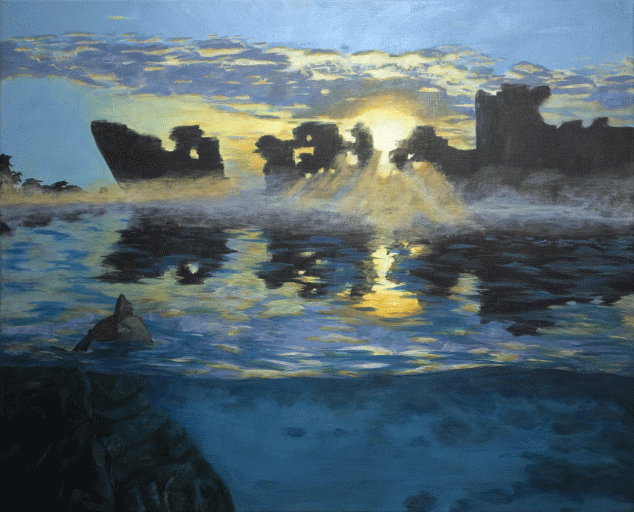Some view science and art as heading in opposite directions.
But many University of Central Florida research and art students say the two fields are complementary and have come together in a project that “is creating synergies that weren’t there before,” said Michael Georgiopoulos, interim assistant vice president for research and commercialization.
Georgiopoulos, also a professor in the Department of Electrical Engineering & Computer Science, said researchers sometimes have a difficult time communicating what they’re doing in nonscientific terms, but the project involving UCF visual arts students is helping to bridge that gap.
The creative results of their work can be seen April 5-7 at the UCF Art Gallery. An opening reception is set for 6 to 8 p.m. April 5.
Georgiopoulos said the initiative, funded by a five-year National Science Foundation grant, establishes collaborations between researchers from different disciplines and entices non-STEM students to become part of a creative process that involves the STEM disciplines.
The curriculum acronym STEM stands for Science, Technology, Engineering and Mathematics, but the arts more and more are becoming wedged into the mix to create STEAM (Science, Technology, Engineering, Arts and Mathematics).
The initiative has brought together STEM and Visual Arts faculty members and their students to create STEM-inspired paintings, sculptures, drawings and posters that illustrate the complex research of genetic coding, theoretical physics and other topics to those that may not readily grasp the ideas.
During the past two years, research students have met with art students to explain scientific breakthroughs and concepts. The artists, in turn, create tangible artifacts to exemplify the ideas.
“Some painting students were inspired to create futuristic visualizations about the wondrous and often abstract theories presented. Others attempted to illustrate the scientific principles,” said Carla Poindexter, an associate professor of art. “Others responded by creating works that suggest the social and cultural opportunities and sometimes the potential ramifications of the science we discussed.”
Christopher Frye, an undergraduate studying physics and mathematics mentored by physics professor Costas Efthimiou, said he first met with a painting class about a year ago when he gave presentations on relativity and quantum mechanics. He followed that up with discussions about the philosophical implications of the theories of modern physics.
Before joining the STEAM project, Frye said he seldom left the environment of the Math and Physics building. During discussions with the artists, however, he learned to explain concepts in a way entirely different from the way he talks with fellow science students.
“So not only did I teach new physical concepts to the students in the art class, but I also discovered new ways to explain scientific ideas to non-science students,” he said. “This is a skill I can use later in my career when teaching is part of my job.”
Art student Paul Finch pointed out that historically many scientists were artists, and the two fields often overlapped.
Michelangelo, for example, was a sculptor, painter and poet in addition to being an architect and engineer, and American inventors Robert Fulton and Samuel F.B. Morse were portrait painters before they invented the steamship and the telegraph.
“Most of us [artists] know more about science than people expect,” Finch said.
Poindexter added that both scientists and artists share similar procedures. They first start with an objective, then theorize how to explore the goal, work through the process, determine when the outcome is reached, and decide if the final product works. If it doesn’t work, they start all over again.
“Artists have a hard shell,” the instructor said. “It’s very much like trial and error until one finds something unique and innovative.”
The students’ final artworks are the end product of following these procedures, artist Drew Powers said.
“This has made me interact with more people, and the art is the result of everything we researched,” he said.
Alea de Bengson said her work was inspired by a presentation about astrophysics and climate change.
“I created these paintings based on the assumption that Florida will eventually end up underwater,” she said. “I asked myself what would happen to UCF when this came about and these are the results” – an algae bloom that turns the water green.
“Algae blooms degrade aquatic ecosystems and water resources for human consumption. In these paintings there are no fish, no coral – and no people.”
The STEAM project is the result of the work of many STEM faculty members and students, and UCF School of Visual Arts and Design professors Theo Lotz, Carla Poindexter, David Isenhour, Joo Kim, Wanda Raimundi-Ortiz and their students.
Undergraduate researcher Frye said he has a new appreciation for art.
“Since I’ve been involved with this project, I’ve seen more art than I’ve ever looked at before. I respond to paintings like I never did,” he said. “I had only been around math and physics and that style of training. Now I’ve seen what bending the universe looks like.”
